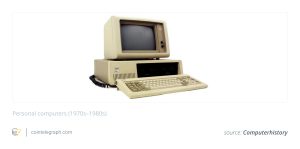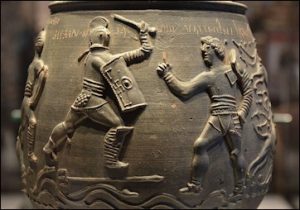In the realm of technological evolution, the early history of computers stands as a testament to human ingenuity and the relentless pursuit of innovation. The journey from primitive calculation tools to sophisticated analytical engines has been marked by remarkable achievements that have shaped the course of human civilization. In this comprehensive article, we delve into the fascinating origins and milestones of early computers, tracing their development through centuries of human endeavor.

The Emergence of Early Calculation Devices
The Abacus: A Timeless Masterpiece
One of the earliest mathematical tools that paved the way for modern computing was the abacus. Originating in ancient Mesopotamia, this device consisted of beads sliding on rods within a frame, enabling users to perform basic arithmetic operations with efficiency. The abacus not only facilitated calculations but also laid the foundation for the concept of counting and place value, fundamental to advanced computing systems.

The Astrolabe: Merging Mathematics and Astronomy
The Middle Ages witnessed the rise of the astrolabe, a remarkable device that combined astronomy and mathematics. Used for solving trigonometric problems and determining celestial positions, the astrolabe showcased the integration of intricate calculations into practical tools. Its influence on navigation and mathematical understanding contributed to the development of more advanced computing mechanisms.
Mechanical Marvels: Birth of Calculating Machines
Pascal’s Calculator: A Leap Forward
In the 17th century, Blaise Pascal revolutionized the landscape of early computing with his invention of the Pascaline, a mechanical calculator. This ingenious device employed a series of rotating gears and dials to perform addition and subtraction, reducing human error and enhancing computational accuracy. Pascal’s Calculator laid the groundwork for the mechanization of mathematical tasks.
Babbage’s Difference Engine: A Visionary Concept
Charles Babbage, often regarded as the “Father of the Computer,” conceptualized the Difference Engine in the early 19th century. This remarkable invention was designed to automatically compute polynomial functions through a series of interconnected gear wheels. Although the full realization of the Difference Engine was hindered by technological limitations of the era, its design marked a significant step towards programmable computing.
The Advent of Analytical Engines
Babbage’s Analytical Engine: A Revolution Unfulfilled
Building upon the foundation of the Difference Engine, Charles Babbage envisioned the Analytical Engine, a mechanical marvel capable of general-purpose computation. What set this invention apart was its inclusion of memory, an arithmetic logic unit, and a control flow mechanism resembling modern computers. Ada Lovelace, a mathematician and visionary, recognized the potential of the Analytical Engine to process symbols beyond numbers, making her the world’s first computer programmer.
Electric Dreams: Early Electronic Computers
The Atanasoff-Berry Computer: Electronic Innovation
In the late 1930s, physicist John Atanasoff and engineer Clifford Berry collaborated to develop the Atanasoff-Berry Computer (ABC). This electronic machine utilized binary representation and capacitors to perform calculations, showcasing the transformative potential of electronic components in computing. Although the ABC was not fully programmable, it laid the groundwork for subsequent electronic computer designs.
ENIAC: Pioneering General-Purpose Computing
The culmination of years of research led to the creation of the Electronic Numerical Integrator and Computer (ENIAC) during the 1940s. Developed by J. Presper Eckert and John Mauchly, the ENIAC marked a watershed moment in computing history. As one of the earliest general-purpose electronic computers, it harnessed vacuum tubes to perform a wide array of calculations, from ballistics trajectories to scientific research.

The Dawn of the Computer Age
UNIVAC I: Bridging Business and Computing
Following the success of ENIAC, the Universal Automatic Computer I (UNIVAC I) emerged as the first commercially produced computer. Developed by Eckert and Mauchly, UNIVAC I catered to both scientific and business applications, demonstrating the versatility of computing technology. Its ability to predict the 1952 U.S. presidential election results showcased the immense potential of computers in data analysis.
IBM 701: Mainframe Marvel
The early 1950s witnessed the introduction of the IBM 701 Electronic Data Processing Machine, a mainframe computer designed for scientific and engineering calculations. This marked the expansion of computing technology beyond research institutions, paving the way for wider adoption in various industries. The IBM 701’s success propelled IBM into a dominant role in the emerging computer market.
Conclusion: A Journey of Innovation
The evolution of computers from primitive abacuses to complex electronic machines is a testament to human creativity, curiosity, and perseverance. Each milestone in the early history of computers contributed to shaping the modern digital landscape we inhabit today. From Babbage’s visionary concepts to the practicality of UNIVAC I and IBM 701, each step forward has paved the way for the revolutionary advancements that continue to unfold.
As we reflect on the remarkable achievements of our technological forebearers, we gain a deeper appreciation for the intricate tapestry of progress that has led us to the digital age. The early history of computers serves as a beacon of inspiration, reminding us that the pursuit of knowledge and innovation knows no bounds.







